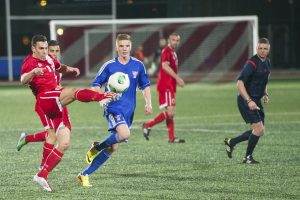St. Pierre & Miquelon football stands as a proud, if somewhat isolated outpost of the French overseas football landscape, lying in an archipelago off the North American Atlantic coast.
Consisting of a relatively small isolated population, lying 25km from Canada’s Newfoundland coast, St. Pierre & Miquelon has remained as an overseas department of France, retaining characteristics such as culture and an accents similar to those on the mainland of the Metropolitan European mainland. This also applies to the sports taking place on the island, including athletics, combat sports, rugby, hockey and of course football. This being an important and well participated part of community life on these islands. Despite the small population and limited resources, football has managed to survive and even thrive on the islands with plans to expand the islands football activities into the future.
Domestic Game ♦ International Football ♦ Football Development
History of St. Pierre & Miquelon
The reasons for the islands continued place as part of the French Republic came after an eventful and occasionally turbulent history in St.Pierre & Miquelon. Evidence of pre-historic activity exists on the archipelago, though they were uninhabited by the time of European exploration in the 16th century. From the beginning, and for much of it’s existence the islands were primarily used as a fishing area for European vessels, mainly for British and French sailors.
By the latter part of the 17th century, permanent settlements began to be established with Jean Talon writing in 1670 that the islands housed “13 fishermen and 4 settled people”. Following the Treaty of Utrecht in 1713, the islands were ceded to British rule, though were returned to France with the Treaty of Paris in 1763 in exchange British fishing rights in the area. Following the turmoil in the aftermath of the French Revolution, Acadian settlers fled the islands before Britain transferred the remaining approximately 950 resident to Halifax, Canada for two years. This left the islands once again uninhabited until 1816 when the islands began to be settled permanently from fishermen, primarily from Brittany, Normandy and the Basque Country.
Settlement was focused on the island of St.Pierre due to the landscape creating a natural harbor for docking vessels, despite Miquelon having a better climate and better arable land. Waters around the islands remained treacherous, earning the islands the moniker of “Cemetery of Shipwrecks”. A local legend suggests that the 12km isthmus which connects the larger islands of Miquelon and Langlade was created from deposits collecting around past shipwrecks between the islands.

Smaller St.Pierre & larger Miquelon
However, the remote location and limited sea stocks left the local economy to struggle apart from boom period in the 1920’s following the enactment of prohibition in the United Stated. St.Pierre & Miquelon acted as part of a route for alcohol smugglers to import alcohol into the US. Al Capone, the well known protagonist in this was know to have spent time staying at the “Hotel Robert” on St.Pierre during this time.
This period would last until 1933 with the U.S. repeal of prohibition, though the islands would not be spared from drama with the the outbreak of WWII, with St.Pierre & Miquelon serving as a North American front for events in Europe. Following the German invasion of France, the islands came under control of the German allied axis Vichy Regime. However supporter of De Gaulle’s Free France movement staged a successful and peaceful coup on Christmas Eve 1941, being an initial success for the allied forces. Tragedy would also strike when the Free France corvette “Mimosa” carrying mostly men fro St.Pierre sank escorting allied convoys on 9th June 1942 with 65 loses.

St.Pierre in 1887
Following this into modern times, St.Pierre & Miquelon has began to prosper, diversifying from being islands of fishing into services, tourism and other areas. However, despite the proximity to France’s former territories in North America, St.Pierre & Miquelon have retained a metropolitan French identity, from culture, accents and sports, with football standing as a focal point of community activities on the Islands.
Domestic St. Pierre & Miquelon Football
Despite a limited population, St. Pierre & Miquelon has sustained three main football clubs on the archipelago. Two are based on the main island of St.Pierre, AS Saint-Pierraise (ASSP) founded on 11/08/1903 & AS Ilienne Amateur (ASIA) founded in 1953. There is also one on Miquelon, AS Miquelonnaise (ASM) being established in 1949 with founding club president Gaetan Detcheverry. At present ASIA stands as the largest club, with some 260 players on their books across the age grades. Behind them, ASSP comes in with approximately half the numbers, with around 130, whilst ASM, on the less densely populated Miquelon have around 60 registered players.
ASSP were the forerunners of football on the islands, occasionally playing to touring vessels for games. An early occasion of this was on July 5, 1921 when ASSP lost 7-1 to the crew of the visiting English frigate “Valerian”at parc à Nicolas, in a magnificent display by the English visitors. They would also play the first Winter time football on February 3, 1958, when a selection from the crews of two visiting warships “La Bourdonnais” and “Agenais” played ASSP. Described as a splendid game, ASSP won out 3-2. In 1977, former Chief Medical Officer of Saint-Pierre Hospital Lieutenant Colonel Lapeyre, brought a military team from Nantes on a three game tour, earning a win, a draw and a loss.

ASSP 1932 Team
ASSOCIATION SPORTIVE SAINT PIERRAISE 1932
1-MAURICE FORGEARD
2-MARCEL GIRARDIN
3-EUGENE BECHET
4-CHARLES DURUTY
5-PAUL POULAIN
6-GABRIEL JACACHURY
7-JEAN DEMINIAC
8-SIMON BOUVIER
9-GUSTAVE LAFITTE
10-MARTIN CARRICART
11- ¿…?
12-PIERRE LACROIX
13- ¿…?
14-MARC MORAZE
15-ALBERT BRIAND
The Bataillon de Joinville army sports team had three game tours of the islands winning all three games, both in 1972 and 1988 against A.S.S.P (4-1) & (4-0), against A.S.I.A (3-2) & (5-0) and A.S.M (3-0) & (9-0). The 1972 team featured players such as Jean-Christophe Thouvenel, later playing for Bordeux and France winning the league, cup and Olympic football gold with France in 1984
Occasions like the visit of FFF National Technical director Joseph Mercier for a month and a half on June 13, 1973, Mr. Desrémaux, Regional Football Advisor for Normandy in 1976 also helped in the development of the game on the archipelago. Perhaps the most high profile was referee Michel Vautrot in for two weeks 1987, to help with a joint St.Pierre/Canada tournament on the islands, but also paid by the FFF to assist with a referee training course. Vautrot brought great experience as the top French official, refereeing the 1983 Intercontinental Cup Final, 1982 and 1990 World Cup’s include Semi Finals, the 1988 Euro’s final and the 1986 European Cup final. From this, Vautrot was named gendarme d’honneur by the company of St.Pierre & Miquelon.
Typically football is played during a summer season, to allow games be played outside of school schedules. This provides an added benefit to the quality of playing surfaces,as due to limited funding, artificial grass pitches are unavailable, and with a limited staff to maintain the playing pitches, the summer season better suits the upkeep of the available natural pitches. The French State offers assistance in this regard, providing funds for two maintenance contractors to work on the pitches.
ASIA can boast three pitches in St.Pierre with the club being based at the Louis Quedinet Sports Complex, with their main ground being the John Giradin stadium (Field of Honour) with a capacity of 1400 spectators. Giradin was part of the founding of the club in the 1950’s helping to open the stadium in 1958, a stadium which now bears his name. Also, John Giradin’s granddaughter would serve as the French National Assembly for St. Pierre & Miquelon and is now the Minister of Overseas Territories in the French Government. Louis Quedinet himself was inducted into the Newfoundland & Labrador football hall of fame in 2013.
There is also the Léon Mahé stadium which is a 9 a side pitch for junior players and a 5 a side pitch for toddlers. Léon Mahé was renowned for he his hard work in the development of children’s football, thus the ground now bears his name.Also, off shore on the small island of Ile aux Marins, ASIA has a guesthouse established by volunteers which features 20 beds and a playing field as summer quarters for young players to stay together, bond as in a more relaxed environment than the main island.
ASSP have one ground located in the centre of town, the Stade Léonce Claireaux located on Rue Georges Daguerre with a capacity of 500. This had previously been the site of the island’s cemetery, but became vacant in 1872, being too small for purpose, with the land later being leased to A.S.S.P from 1926. Both clubs on St.Pierre continue to improve facilities with A.S.I.A undertaking great work improvements to the posts and stands for spectators at the South end of the ground. A.S.S.P have also improved storage facilities at the ground to add to an already pleasant stadium.

ASSP Stade
Also located further south along the shoreline on Boulevard Port en Bessin, is the Sport and Cultural Centre. This ground features a surrounding Olympic track, however the pitch is not used by any of the football clubs on the island, instead being rented as a rugby playing pitch. Indoors there is a sports hall which is used for winter futsal among the islands teams. On Miquelon, ASM play at the Stade de l’Avenir on Route du Stade, with a capacity for approximately 200. It features a main playing field, and a smaller second field divided into two smaller pitches for youth football. These pitches are also served by a small clubhouse.
For competition on the islands, the main prize is the St.Pierre & Miquelon Championship, featuring the three senior teams, ASIA, ASSP and ASM. These teams all play a total of 16 games during the Summer season, with each side playing both opponents 8 times, 4 home and 4 away. The season itself is divided into 4 ‘mini-leagues’, so there is a constant competitive element throughout the season. At the end of the season, the leader in the overall league table is declare the winner of the championship.
For the 2017 season, the sponsored segments of the season were named the Coupe “Rotary Club”, “CAS EDF”, “Taxi Tan” and Coupe “Agricole Eco”. Further to this, the teams place in 1st and 2nd in the table play in a further game, at the home venue of the Championship winner, to contest the Archipelago cup, the grand final of the season. In this 2017 edition, the honours went to ASIA who complete the 14th league and cup double in the clubs history, winning the final 4-0 against St.Pierre rivals ASSP (
Full Match here)
Outside the local competition, team from St.Pierre & Miquelon often compete in Canadian competitions in Newfoundland. With the main senior competitions being restricted to Canadian teams (so they can represent the province at national level), St.Pierre & Miquelon teams have for a long time been permitted to compete in ‘B’, 2nd division or intermediate championships, where they have occasionally found success. In 1977, the A.S.I.A pupils team won the Newfoundland Cup for their age bracket, beating a St.Johns team 6-2. In 1978 two senior teams from the archipelago met in the adult intermediate final with A.S.I.A beating A.S.S.P 6-4 after extra time. 1979 A.S.M saw find success in this tournament beating Springdale in the final, being carried by Miquelon locals on their return home in celebration, winning the title again in 2012, beating Grand Bank GeeBees 3-1 in the final. A.S.I.A would also win the short lived “Premier’s Cup” in Newfoundland in 1984 before that tournament ceased.
As in many countries, women’s football had a later development on the islands. The first official women’s match took place on 07/04/1977 in a 2-2 draw between A.S.S.P and A.S.I.A at the Stade Léonce Claireaux in a 2-2 draw. The first foreign women’s team to visit was the Canadian team Grand-Bank from Newfoundland on 09/04/1977 to face A.S.S.P with A.S.S.P winning out 3-0 at the Stade Léonce Claireaux. Currently perhaps due to a North American influence on the French islands, 25% of players on the islands are female, higher than the European the average. This is also helped by the specific work done by clubs and coaches on the islands, which has seen recognition by the FFF, with A.S.I.A given the label “École Féminine de Football” in 2013, in particular for pre-teen female football development and again a Women’s Silver Football award in 2017 of the continued work and progress in this area.
St.Pierre & Miquelon National Team and International Representation.
Outside the domestic game, St.Pierre & Miquelon has also fielded a national team to compete in the 2010 and 2012 editions of the Coupe de l’Outre-Mer, a competition for teams representing France’s overseas territories, back with €900,000 funding from the FFF. However in these tournaments, work commitments forced many regular players to miss out, leaving St.Pierre & Miquelon to send a squad of student players who would be available for the tournament.2012 St.Pierre & Miquelon Squad
|
2012 Coupe de l’otre Mer -St.Pierre & Miquelon Squad
|
| |
| Goalkeepers: |
| Olivier Morel (c) (ASM) |
| Simon Hebditch (ASSP) |
| |
| Defenders: |
| Rémi Audouze (ASIA) |
| Jean-Baptiste Borotra (ASSP) |
| Ivan Dos Santos (ASM) |
| Mathiaud Kevin (ASM) |
| Gary Urdanabia (ASIA) |
| |
| Midfielders: |
| Xavier Delamaire (ASIA) |
| Maxime Gautier (ASIA) |
| Matthieu Demontreux (ASSP) |
| Nicolas Lemaine (ASM) |
| Aymeric Tillard (ASIA) |
| Tristan Girardin (ASSP) |
| |
| Forwards: |
| Mickaël Lucas (ASM) |
| Olivier Blanchet (ASIA) |
| William Revert (ASIA) |
| Martin Disnard (ASIA) |
| |
| > Coach: |
| Yannick Lafont |
Although both campaigns featured very heavy defeats in all games against much more experienced, well funded and profession teams, there were occasional bright points. These included getting on the score sheet against French Guiana and New Caledonia, a team that reached the final of the OFC Nations cup, comfortably beating 2010 World Cup participants New Zealand along the way. Speaking about their tournament exploits to World Soccer, head coach Yannick Lafont said.
“We do not complain, we cannot bring quality, but we can bring good sportsmanship”
The suspension of the Coupe de l’Outre-Mer after the 2012 edition due to cost has left St. Pierre and Miquelon somewhat disconnected from the rest of the French footballing community and the wider international footballing world. However there are now initiatives to begin entering the champion club in the Coupe de France, which would again provide a wider outlet for the St. Pierre & Miquelon footballing community to have a reach beyond their corner of North America.
In the past there have been occasional exhibition games against other visiting football teams. During the 1970’s two high profile Scottish teams visited St.Pierre. A combined A.S.I.A – A.S.S.P team faced Ayr United at the Stade John Giradin on 04/07/1975, with the superior professional visitors winning out 14-0 in an excellent display. 1978 would see Queen’s Park of Glasgow also visit as part of a Canadian tour, this time with A.S.M players joining at the Stade John Giradin on 21/07/1978 to make it a complete combined archipelago team. In what was a more competitive game the home side still found themselves with a losing scoreline of 4-0. Tragically two Scottish players, Bernie Donnelly and David Ballantyne would die in a car accident just days later on this Canadian tour following this game.
On the opposite end of the experience scale, the most high profile game to take place in St. Pierre & Miquelon occurred in 1997, when a Variety Club de France side featuring Michel Platini visited the islands. Though Platini proved to be a little aloof, avoiding visiting the young people on the islands. However, it was a great occasion for the footballing community on the islands, despite a 5-4 loss in the game for the St.Pierre & Miquelon selection.
Match Stats & Lineups
| Final Score – Variétés Club de France 5-4 St.Pierre & Miquelon |
| Venue – Stade John Girardin Referee – Joël Quiniou Attendance – 1,400 |
| |
| Lineups |
| Variétés Club de France |
St.Pierre & Miquelon |
| Xavier Perez |
Stéphane Audebaud |
| Thierry Blanchon ⊕30 |
Gino Bonnieul |
| Bruno Blachon |
Jean-Noël DeLizarraga |
| Robert Buigues |
Denis Gauthier |
| Jean-François Domergue |
Desdouets Goénaël |
| Daniel Toti |
Gildas Morel |
| Bruno Germain |
Arrossaména Paul |
| Jean-Michel Larqué |
Franck Lebars |
| Gérard Bernardet |
Gaël Detcheverry |
| Michel Platini ⊕19, 36, 71, 78 |
Stanislas Beck |
| Jean-Pierre Orts |
Xavier Dodeman |
| Jean-Paul Guemise |
Claude Michel |
| Patrick Valente |
Denis Rebmann |
| Victor Zvunka |
Arnaud Urdanabia |
| Eric Faisant |
Philippe Dodeman ⊕75, 85 |
| Lionel Tejedor |
Yannick Kello |
| Paco Rubio |
Jean-Pierre Plaa ⊕23 |
| Charly Thetard |
Miguel Tesnière |
| René Hamard |
|
| Jacques Vendroux |
VCF Own Goal ⊕19 |
| |
|
Unused VCF Players
| Michel Ennesser |
Serge Piovan |
| Eric Rolland |
Thierry Roland |
| Patrick Iriart |
Emmanuel Fraudin |
| Michel Brohan |
Gérard Morin |
| Daniel Vertelary |
Jean-Claude Derouet |
| Michel Bretagne |
Jean-Claude Colas |
| Joël Quiniou |
Jean-François Falcou |
| Pierre Ville |
|
|

St.Pierre&Miquelon v VCF
Footballing Development
For the underage football teams on the island, there is an opportunity to travel to Newfoundland in Canada to play in youth competitions. This typically happens crossing the 25km to their near Newfoundland neighbours, but occasionally games against teams from far parts of Newfoundland such as Stephenville are possible. Youth teams have also traveled further inland in Canada to Cape Breton, Nova Scotia, but a lack of funding make such trips difficult and infrequent. The investment in facilities for youth football along with participation in these competitions has enabled recognition.
In 2016 ASIA organised a rally for 250 school aged players as part of a competition organised by the FFF, which resulted in 12 children and 3 adults being rewarded with a trip to see the Euros in Paris. Also ASIA was also awarded a “Youth Excellence” award by the FFF. This follows in a fine tradition on the islands coming from the likes of Clément Vallée, who worked for 60 years as a caulker at the St.Pierre port, but also made life long contributions to hockey, while both playing and refereeing football on the islands too. For this he was awarded the French National Order of Merit and Sports medal for his contributions.
These awards have helped bring further notice from the FFF to the efforts of the people on the islands. In the summer of 2017, 2 young ASIA club girls, Léa Sbeghen Lamiraud and Eloïse Michelins were selected from a group of 60 across the country to be invited from St.Pierre to join a scouting camp at the FFF centre of excellence in Clairefontaine in France further evidence of the developing level of skills and recognition of this by the FFF.
Much promise is being held for 15 year old Tommy Skinner who in 2017 left the islands to go to mainland France, in Loches to pursue dreams of becoming a professional footballer. He was selected among nine candidates to apply for a sports position from St.Pierre & Miquelon (Though most were for hockey). Now as part of school there is 4 hours playing time with his school while also training several times a week, with matches at the weekends, a much more sophisticate setup than can be expected in St.Pierre. The experience of Tommy shine a light on the difference between these to distant and distinct parts of modern France.
“Here, the landscape is different, people are different. Life is different… There, we all know each other. We say hello. Here, in the street, we do not look at each other.”
In contrast, while players move from St.Pierre & Miquelon to seek further opportunities on mainland France, through football, but also for education or to experience the metropolitan life, the reverse can be true for coaches. Though the FFF does not fun additional coaches, clubs on the the archipelago, many are recruited on a temporary basis to help the development of St.Pierre & Miquelon. One such coach, Mattieu Guillain from the Indre Football District on the mainland made the North Atlantic move to spend four months on the islands, working mainly with developmental versions of the game, such a the female teams and futsal. Speaking of his experience, it resemble that of many who spend time working with the game in St. Pierre & Miquelon.
“It was a pleasant four months, I wanted to travel and discover other football…There is a real fervor around football there!”
Looking to the Future
Though there is a strong vibrant footballing community on the archipelago, limitations due to climate, location and funding among other issues continue to remain a barrier to progress on the islands, despite the proud tradition of football and the amazing hard work of players and volunteers involved with the game. Visits like that of FFF president Noël Le Graët in 2015, give hope of federation support, unsure if any will materialise. Speaking at the 2012 Coupe de l’Outre-Mer, midfielder Stanislas Beck spoke of the ambitions for football development on the islands.

Noël Le Graët Visits
“… our progress depends essentially on the creation of good structures such as covered terrain. With this type of facility, we could raise the level in the archipelago and compete with other oversees teams. Without these infrastructures, we can not improve local football by bringing in coaches or Regional Technical Advisers on the archipelago. Indeed, it is impossible for them to work, at least in the medium term”
The occasional funding received is complimented by the community role these clubs play, offering club memberships, lotteries, community events which can help with fund basic running costs, but leave no room for a great expansion of infrastructure. However what is clearly evident is that the game on these islands is mostly fueled by the dedication of participants and passion for the game. It is this which has provided the great tradition of the game in St.Pierre & Miquelon and ensures it’s continuation as a integral presence in life in St.Pierre & Miquelon.
Great credit to Ludivine Quédinet for her tremendous help with this article, with out whom it would not have been possible to write. Also to Jeff Babstock for help with Newfoundland details.
It’s possible in translation that errors or omissions have occurred in this article, so if any errors are notice, please write and they can be corrected, with due credit given, of course.
Toute aide pour corriger les erreurs dans cet article est appréciée
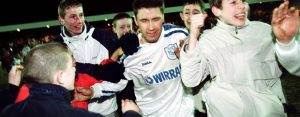
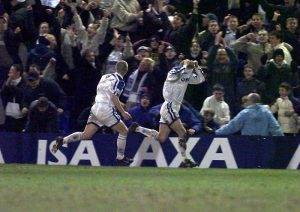
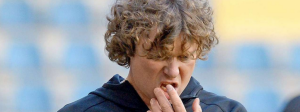
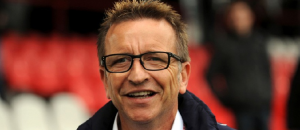

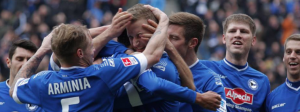
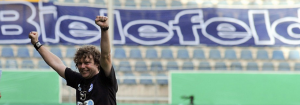



 Belarus
Belarus Nicaragua
Nicaragua Burundi
Burundi Turkmenistan
Turkmenistan Tajikistan
Tajikistan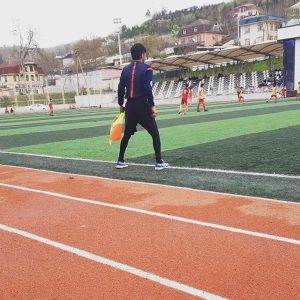
 Taiwan
Taiwan










